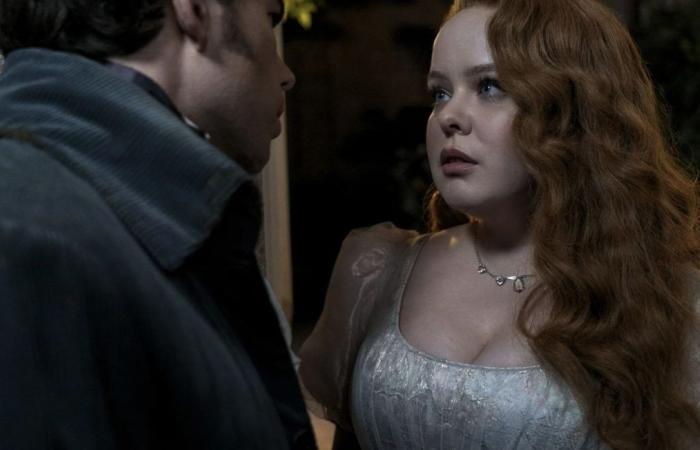A woman guided by her intellect, courted in the high society of the English Regency. This is the heart of the new season of Shonda Rhimes’ romantic series, The Bridgerton Chronicles.
“Penelope Featherington is a white woman who is less thin than what we are used to seeing on screen (played by Nicola Coughlan) who is at the heart of the plot,” explains Carine Farias, professor of entrepreneurship and ethics. With her 1m55 and her generous figure, she stands out from the usual standards of thinness. Criticized or applauded for this rare initiative on screen, spectators wonder about the absence of fatphobia in the series.
“Penelope’s Bridgerton season is a bit weird because although they improved the story in the adaptation by removing the problematic “consider the fat girl” framing from the book by never mentioning height. This leaves a strange hole in the story that the viewer must fill in,” we read on Twitter.
Clicking on” I accept “you accept the deposit of cookies by external services and will thus have access to the content of our partners.
More information on the Cookie management policy page
I accept
“It seems that a part of the public is not ready or used to seeing people with generous figures on screens,” adds Farias. Is a purely positive representation a real plus or does it make the realistic experience of a person who looks like Penelope invisible?
To explore this question, we interviewed Carine Farias, professor specializing in the construction and representations of ethical, moral and cultural norms and practices within groups and organizations. We asked him if the lack of fatphobia in Bridgerton is an advantage or a disadvantage.
A director who wants to shake up preconceived ideas
Shonda Rhimes is famous for revolutionizing the representation of women on television. “She dusted off the way women were represented,” attests expert Carine Farias. In series like Grey’s Anatomy, Scandal et How to Get Away with Murdershe knew how to shake up the codes of racialized female characters by recognizing in them complex and profound personalities and life experiences, moving away from stereotypes.”
The director has continued this approach by addressing other minorities, including non-thin people in this season of Bridgerton. According to Carine Farias, “she moves away from stereotypes that discredit the sensuality of overweight people or represent them as leading an unhealthy lifestyle.” In her series, corpulence is not the central issue and non-thin characters are not relegated to the background or devoid of depth and nuance.
Shonda Rhimes places particular emphasis on deconstructing common stereotypical patterns. “The ‘deconstruction’ approach, resulting from the work of Jacques Derrida and Michel Foucault, aims to make structural constructions and standardized mental schemas apparent, explains the expert. In deconstruction, we retain a classic narrative structure, but we change a quality that calls into question the bases of our stereotypes.”
Thus, in the 19th century romance, Penelope, a curvy woman at the heart of the plot, allows us to question our stereotypical ideas about this type of physique. “It’s a way of questioning our preconceived ideas and offering a more nuanced and authentic representation,” concludes Carine Farias, who highlights the benefits of promoting different forms of beauty. This opens up an important political space where it becomes possible to reconstruct plural standards of beauty.”
The couple of Colin Bridgerton played by Luke Newton and Penelope Featherington played by Nicola Coughla - Copyright Netflix
Be careful not to make the experience of curvy women invisible
“The deconstruction technique, although it has the merit of questioning stereotypes, tends to address the ‘majority’ viewer rather than the minorities represented. To go further, we also need to change our perspective in the representation of people with varied body shapes,” she adds.
It is crucial to recognize body stereotypes and fatphobia. The series incorporated the point of view of the actress, who requested nudity scenes, into the original script. This participatory writing reflects lived experiences and tells inclusive stories, representing the desires of minoritized people, like this non-thin actress.
“It’s not just a body, although her body has an impact on the different encounters she has,” concludes Carine Farias. In conclusion, Shonda Rhimes’ approach is positive, because it aims to deconstruct stereotypes about minority and curvy women. However, this ideal representation must find a balance so as not to mask the reality of societal discrimination.






